Thursday, October 30, 2014
Today was another full day of walking the remaining Special Tests. We’ve not even set foot at the Paddock yet because we knew we had to take advantage of these last three days to check out all the tests, because tomorrow will be a marathon day for everyone getting bikes ready.
We received word tonight at dinner that the container has arrived. Most countries have already completed bike prep and beginning to get ready for impound. The U.S. has been trying to take advantage of the time by studying the Special Terrain tests.
We’ve been working our way backwards as far as the sequence of the tests, so today we hit the remaining four tests that will be used for Days 1 and 2. The good thing is that the tests from today, are very different from the tests from yesterday. They are however, all still very “West Coast” style, and by that I mean, desert style……more fast and flowy and the terrain is all either rocks, sand, or a combination of the two.
The other nice thing about today was the cooler dropped quite a bit. It was much more pleasant walking tests, after baking out in the desert the past two days. It is supposed to continue to be cooler through the weekend, so we’re crossing fingers that will extend into next week.
Below are a series of pictures from walking the four separate tests today.
The first test is just east of town about 5 miles, right as the valley transitions into the foothills. The test starts by traversing the ridges of some of these gnarly hills. There are some pretty technical sections. It’s not so much that riding them alone will be challenging, but riding them at special test pace will be a fine balance between being smooth and not going off a cliff.

As always, pictures never do it justice, but this is an uphill rocky section of the test.

The Spanish team (Espana) was walking it right behind us. They were being very studious of their lines.

Again….not particularly hard to ride, but to race at special test speed on this type of terrain takes a bit more finesse and concentration.
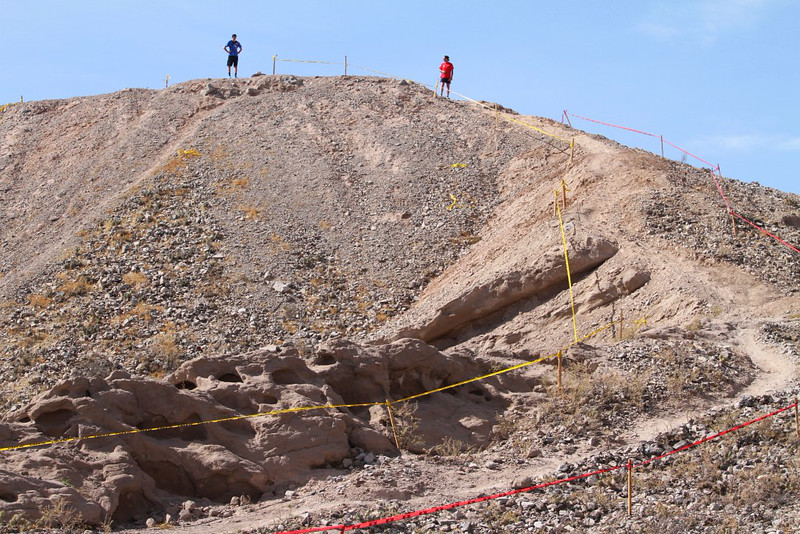

This Spanish rider was a good student of the test. He separated from his group and was committing all he could to memory. He would walk a section, close his eyes, and re-create it from memory, and then move on. It’s the little things that make the difference at the Six Days.

After the first mile or so or rocky ridgelines and off-camber hillsides, the test transitions down into the flats and then just turns into a high-speed desert flat track course. This section is going to develop huge silt ruts and be a dust bowl before it’s over.

One of the first things I noticed here in Argentina were these trees that are in bloom now. They’re not everywhere, but they are common and they’re really cool.

We then drove on to Test 2. As we neared the test, we came into these hills. I could have sworn we were right at home. For all my Utah friends, this was like driving through Green River, Caineville, or a lot of the areas around Capitol Reef in Utah. It’s crazy how similar it is.
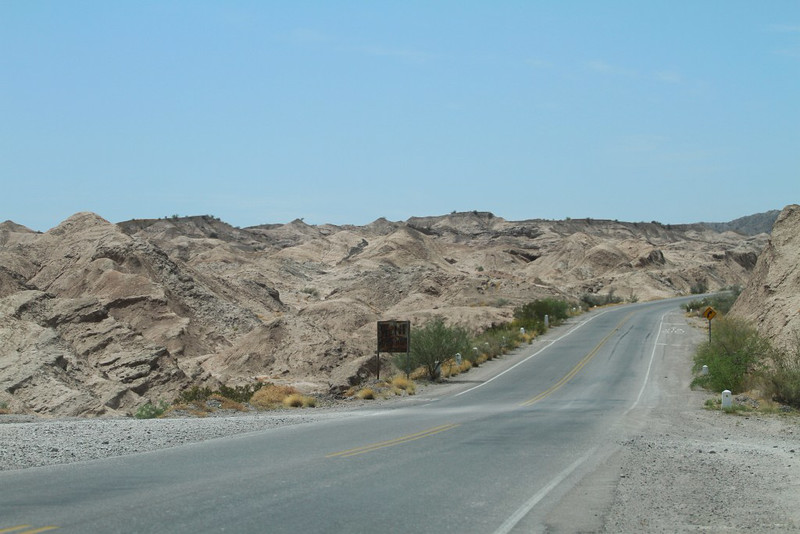
The view then opens up to this. This is Test 2 for Days 1 and 2. The test is right on the “beach” of this reservoir and next to a resort community. The reservoir is extremely low and there are several hundred yards of rocky exposed. About half of the test zig zags along the shoreline. We nicknamed this the “Havasu” test. If anyone is familiar with the Havasu City Arizona WORCS race, this is a carbon copy. It’s likely to develop the same huge sandy/rocky whoops and berms as well.

The rocky shoreline. All of the lathe is pounded, and they have one side of the ribbon up, but wind has wreaked havoc on it so they’ll have to get it tidied up before next week.

Justin Sode and Kyle McDonal checking out the test.

This picture provides some better perspective of the beach and where the test runs.

Josh checking out the test as well. He thought it was pretty cool.

The unique thing about this test is about half of it sits on the beach and then it transitions to the other side of the resort community and goes right into these hills. If you look closely, you can see some of the yellow ribbon and lathe down in the bottom of the main wash in this picture. It zig zags around down in there, and then come back towards the beach and they’ve built up a couple of big jumps right in the middle of the wash.

One more of the test and the lake behind it. Despite being a resort community, the place was practically a ghost town.

These are some of the nicest houses we’ve seen since we’ve been here. They’re looking right down on the test and beach.

After Test 2, we backtracked down the highway just a couple of miles. This took us to Test 3 which is known as the “Acer” test. This one is also very unique because it is the site of the Final Moto on Day 6. It is a motocross track, but it is also being incorporated as part of Test 3. That means that racers will have had some time on the track before the final moto. They only ride this test once on Day 1 and then again on Day 2, but nonetheless, getting around the track a few times before Day 6 is very unique. This is Rachel Gutish from the Women’s Trophy Team and her Dad in this picture, checking out the track.

There has been a lot of work done at this facility. You can tell that prior to the Six Days, it was probably a pretty ghetto track. However, I will give them proper credit, because they have done a lot to improve the facility! It was very clean, the track had been watered, and everything was groomed, and sculpted, new fencing, etc. A few of the jump faces needed some TLC, but as a whole, you could tell there had been a lot of effort to improve it.

The timecheck and start of the Special Test will start right at the Motocross track (in this picture where you can see the wood that looks like pallets).

A view looking back towards the reservoir where the other test sits. You can also see the cement starting gate of the MX track in this picture.
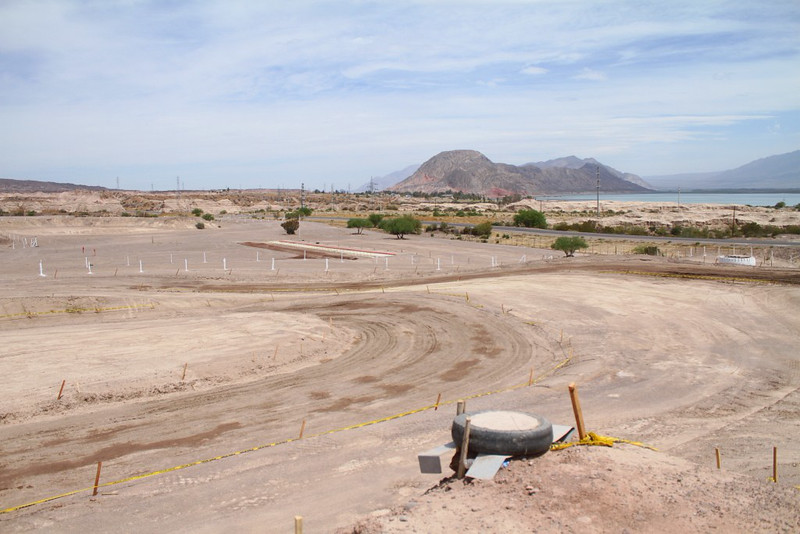
Regarding the improvements, they had installed a completely new sprinkler system and had this risers everywhere along the track. That’s the good news.
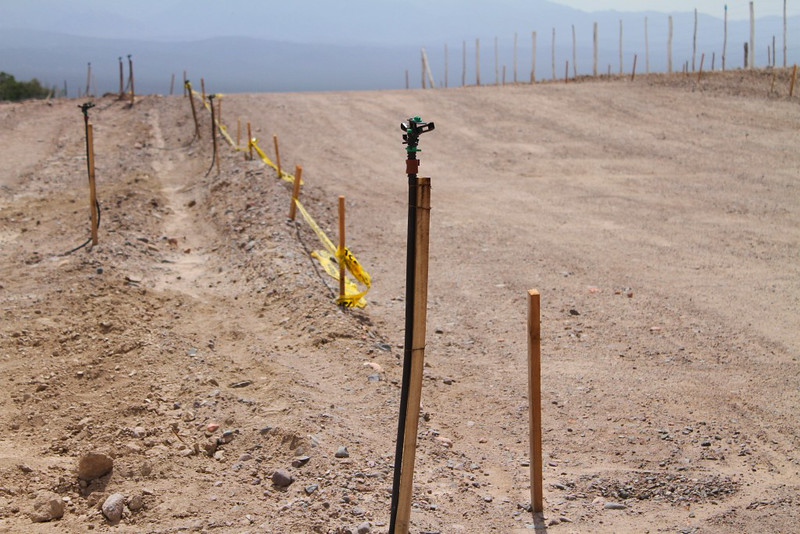
The bad news is, these guys were just connecting the plumbing to the brand new water tanks so the system is completely un-tested. Based on personal experience with our own local MX track and watering system, this could be interesting.

As mentioned, the unique thing about this test is that it will be both the site of the Final Moto, but is also a portion of Test 3. Riders will exit the track about halfway through and then hit the desert for the rest of the test. Most of the rest of the test sits in this big wash.


It then goes under the highway and comes back. They have excavated both of these tunnels under the highway, digging down another 6 feet or more so riders can cruise through them at race speed.
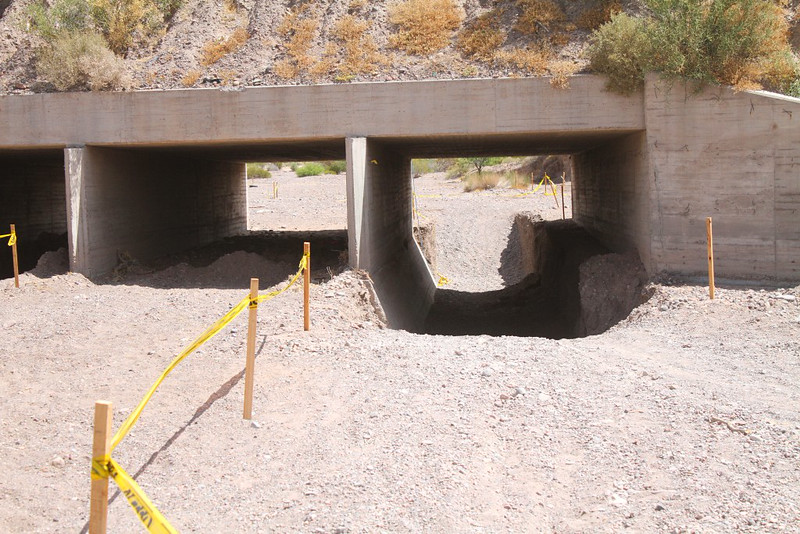
A few Endurocross obstacles thrown in for good measure, before coming back onto the track.


Why a picture of a bundle of lathe? I took this to show the difference between the lathe used at the Six Days compared to what we use at home. This lathe is about 2 inches by 1 inch thick. It is pounded about every 10-20 feet along both sides of the tests. Each test is about 5 kilometers (3 miles) long. There are pallets full of it everywhere. I’m pretty sure there is more lathe used on a single special test at the Six Days then there is on an entire 100 mile Hare n’ Hound desert race like at home. And to top it off, there are 11 special tests this year in Argentina.

There are several pretty good sized jumps on the track, this triple step-up being the largest, but they all have huge landings and are very safe. I want to be one of the first guys standing there when Zach Osborne hucks a big old whip over this jump in the middle of the special test.

These guys were digging the trench for the conduit that will be used at the start and finish for the transponder scoring.

We were then on to the fourth and final test. Our feet were sore, and we were hot and tired, but knew we needed to check out the last test.
This at the start of the test. These pallet style starting gates are common at the Six Days and are used immediately under the transponder tower to help minimize dust, and to avoid the inevitable huge rut that will form as racers take off from the Start.

These guys were doing the same, putting the finishing touches on the conduit trench. The Start and Finish are adjacent to each other on the test.
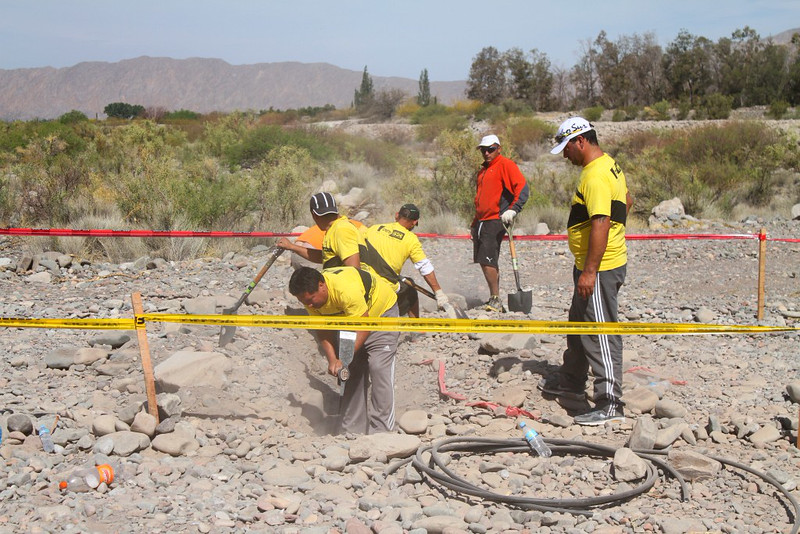
This test was really pretty cool. The entire test sits in a big rocky river bottom/wash that is fed from those mountains in the background of this picture. It is mostly rock, but there are some sandy sections as well and due to how big and wide the wash is, it has a lot of varying drop-offs and small elevation changes.

And the best part, there is actually a little water constantly flowing. We kept hearing rumor about some “mud”. The East Coast guys were probably loving this.

Here you can see how the test traverses the water back and forth. This one should be a good spectator test.

Did I mention rocks?

Rocks and water.

Josh checking out the last of the test before we headed back to the hotel with sore feet after three straight days of walking. It will be exciting to get to the Paddock tomorrow and begin bike prep.







